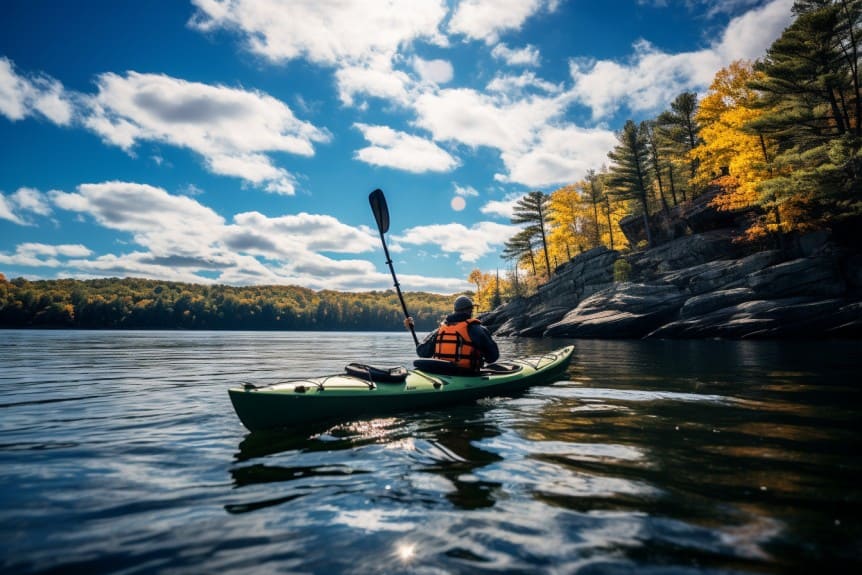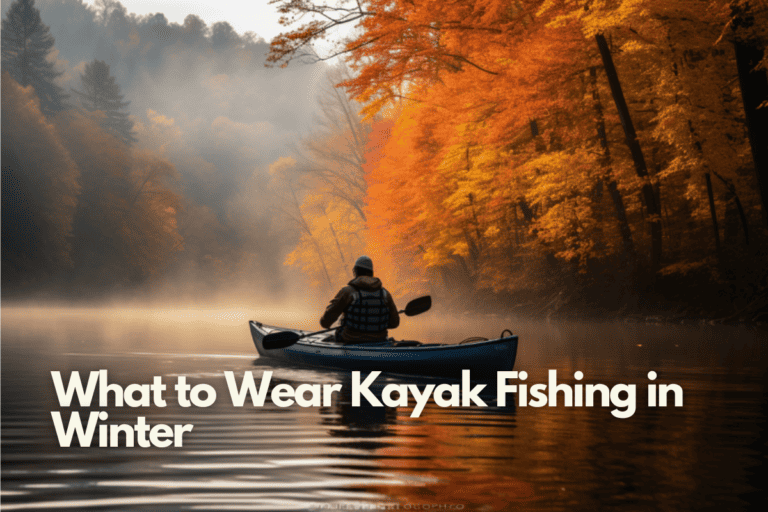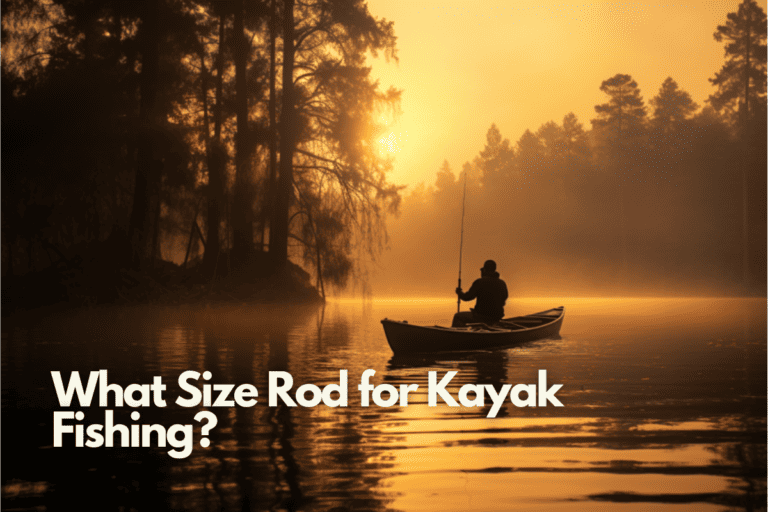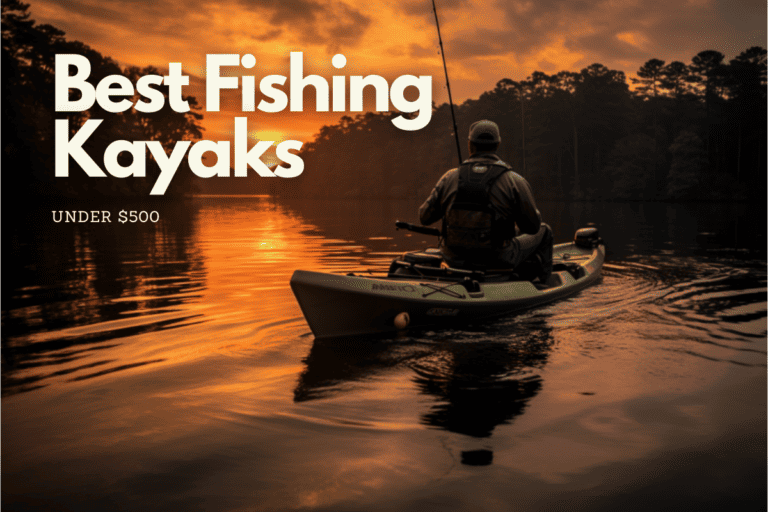How Stable is a Fishing Kayak in 2023? What You Should Know

In 2023, the intriguing world of kayak fishing has seen tremendous evolution. From the traditional sit-in kayak to the cutting-edge pedal drive kayak, anglers are presented with a plethora of choices. A frequently asked question amidst this growth is, “how stable is a fishing kayak?”
The answer largely hinges on the kayak design, with many fishing kayaks coming explicitly built to offer stability without sacrificing other essential features. With the kayak industry booming, it’s paramount for every kayak angler to understand what makes a fishing kayak stable enough for their fishing needs.
How Stable Is a Fishing Kayak?
Fishing kayaks, which are specialized water vessels, are designed to provide a balanced platform for anglers. Their stability varies based on design, width, and hull shape, ensuring safety and convenience during fishing activities.
Generally, wider and flat-bottomed fishing kayaks offer increased stability, especially on calm waters, making them suitable for beginners and those looking to fish without much disturbance. However, different models and designs cater to various conditions and skill levels.
As a larger kayaker, I remember my heart fluttering in my chest the first time I stepped into a fishing kayak. Fears and doubts swarmed my mind. Would it flip? Could I fall into the cool, swirling depths below? If you identify with such lingering anxieties, this blog post is here to clarify the stability concerns surrounding fishing kayaks.
Understanding Primary vs. Secondary Stability in Kayaks
Stability in kayaks, which is essential for a safe kayaking experience, divides into primary and secondary types. Primary stability pertains to the kayak’s balance on calm waters, while secondary stability relates to its steadiness when tilted or facing rough waters.
| Aspect | Primary Stability | Secondary Stability |
|---|---|---|
| Definition | Refers to a kayak’s steadiness on flat, calm water. | Denotes its balance when tilted or in rough waters. |
| Importance for | Beginners, casual paddlers, and flat-water kayaking. | Advanced paddlers, rough waters, and lean-turning. |
| Favored Kayak Design | Wider, flat-bottomed hulls. | V-shaped or rounded hulls. |
| Performance | Kayaks with high primary stability feel stable initially but may capsize more easily when tilted past a certain point. | Kayaks with high secondary stability might feel tippy at first but are harder to capsize fully. |
| Example Scenario | Paddling on a calm lake or river without many disturbances. | Navigating through rough waves or performing lean turns. |
| Recommended for | Fishing, photography, or any activity requiring a steady platform on calm waters. | Sea kayaking, whitewater kayaking, or when expecting to navigate in rough conditions. |
Picture a peaceful day on the lake – your kayak gliding as smooth as silk, leaving nothing but a slight ripple in its wake. This serene image embodies what we call primary stability, which refers to a kayak’s steadiness when it’s flat on the water.
As an experienced kayaker, I have seen firsthand how different types of kayaks perform. Broad beams are often seen as the first line of defense against a potential capsize when the water is calm.
Now, imagine the contrasting scenario. You’re battling the waves, your kayak tossing and turning as you lean into the tumultuous water. How your kayak responds in this situation reflects its secondary stability. Importantly, strong secondary stability can help you avoid the dreaded capsize even amid the wild waters.
Factors Influencing the Stability of Fishing Kayaks

The stability of fishing kayaks, crucial for ensuring safety during fishing, is influenced by several determinants. Factors like design, weight distribution, and the kayaker’s skill can either enhance or diminish a kayak’s balance on water. Determining a kayak’s stability is akin to creating a recipe, and numerous variables constitute this delicate balance:
- Design and Shape: Broader kayaks with flat bottoms usually offer more stability than narrow, V-shaped hulls.
- Weight Distribution: Even distribution of weight ensures stability.
- Water Conditions: Calm waters are more stable than rough waters.
- Kayaker’s Skill: Experienced kayakers often maintain stability better.
The design and shape of your kayak set the stage. Wider kayaks with flatter bottoms, like a firmly rooted tree, offer more stability than their narrow, V-shaped counterparts.
Draw an imaginary line dividing your kayak into two halves. Where your gear and body lie on this line can dramatically influence stability. As I learnt the hard way through many a toppled kayak, even weight distribution is pivotal!
Don’t forget to consider the temperament of the water. The mild currents lapping against a lakeshore are forgiving compared to the fierce fury of a winding river.
Finally, the skill level of the kayaker is a significant influence. A master can contact dance on thrashing rapids while a novice can falter on the calmest of streams.
Common Causes of Kayak Tipping
Kayak tipping, which is an undesired shift in balance, often results from various triggers. Causes like abrupt movements, external disturbances, or improper weight distribution can lead to the unsettling or even capsizing of a kayak. Despite a kayak’s inherent stability, it can still tip under certain conditions.
- Incorrect Weight Distribution: Overloading one side or uneven gear distribution.
- Sudden Movements: Quick or unanticipated movements.
- External Forces: Currents, waves, or collisions.
An uneven weight distribution can trigger a precarious wobble, leading to a sudden flip. Just like stacking blocks, a sudden movement can tip the fragile equilibrium, causing a capsize. And never underestimate the power of mother nature as external factors like waves or winds can throw off the balance.
Techniques and Tips to Enhance Kayak Stability
Enhancing kayak stability, crucial for a smoother kayaking experience, can be achieved through specific methods and strategies. Techniques such as using outriggers or mastering correct paddling can significantly boost a kayak’s steadiness, ensuring a safer trip.
After experiencing a few unwelcome dips into freezing waters, I’ve learned some techniques that considerably improve kayak stability.
- Outriggers: Structures attached to the kayak to aid stability.
- Proper Paddling Techniques: Effective paddling can help maintain balance.
- Weight Distribution: Distributing weight evenly and not overloading.
Take a leaf out of a pirate’s playbook and consider using outriggers. Yes, you heard it right! These structures, once attached to your kayak, improve stability, especially when standing for a triumphant cast.
Developing proper paddling techniques is also crucial. Just like learning to ride a bike, the right strokes can help maintain balance against the forces destabilizing your kayak. Perfecting your weight distribution through conscious positioning of your body and gear can also a great difference.
Selecting the Right Stable Fishing Kayak

Choosing a fishing kayak, which is a decision critical for every angler, demands careful evaluation of stability features. Factors like personal reviews, design specifics, and hands-on testing play pivotal roles in selecting a kayak that offers both safety and functionality.
| Kayak Type | Best For | Pros | Cons |
|---|---|---|---|
| Sit-In Kayak | Cold waters, longer trips | Better protection from water, often faster | Harder to get in/out; less storage |
| Sit on Top | Warm waters, quick trips | Easy to get on/off; more storage | Less protection from water |
| Pedal Drive Kayak | Long distances, hands-free fishing | Faster, less tiring | Typically heavier and costlier |
| Tandem Kayak | Paddling with a partner | Teamwork, shared load | Requires coordination |
| Hobie Mirage Pro Angler | Professional Angling | High stability, storage, features | Premium price |
| 3 Waters Kayaks Big Fish | Stable fishing in diverse waters | Wide and stable design | Might be bulkier for transportation |
Reading reviews with a keen eye on stability can help you find the right kayak. I urge you to test the kayak before purchasing it. Emulate a real-life scenario as much as possible, my fellow kayakers!
Your specific needs also matter. If you plan to stand while fishing, ensure that the kayak can cater to this without destabilizing.
The Safety of Standing on a Fishing Kayak
Standing on a fishing kayak, which is often desired for better casting or spotting fish, poses specific safety considerations. Kayaks designed with broader beams and flat hulls offer a safer platform for standing, but awareness of precautions is vital for every kayaker.
- Practice in Safe Waters: Begin in controlled environments.
- Use Kayaks Designed for Standing: Look for designs with wide beams and flat-bottomed hulls.
- Always Wear a Lifejacket: Prioritize safety at all times.
However, never underestimate the importance of practice. Aim to master this skill in a controlled environment before venturing out into open waters. Prioritize kayaks designed for standing with wide beams and flat-bottomed designs. But remember, a lifejacket is your best friend during accidental tipping.
A fishing kayak is not just a vessel; it’s a wonderful platform to experience thrill, tranquility, and the joy of a good catch. Arming yourself with a deeper understanding of kayak stability will equip you better to navigate beautifully unstable waters with confidence! After all, what’s life without a little bit of watery adventure, right?
Final Thoughts
Modern fishing kayaks offer the kayak angler a stable fishing platform, allowing them to stand and fish, even in challenging waters. These advancements have made it easier to transport the kayak to your favorite fishing spot and provide a hands-free fishing experience.
As the kayak world continues to innovate, finding the most stable kayak for fishing becomes a more enjoyable quest, filled with the promise of great fishing adventures ahead.
Frequently Asked Questions (FAQ)
Q: How stable is a fishing kayak?
A: Fishing kayaks are designed to be stable on the water. They have a wider hull compared to regular kayaks, which makes them more stable and less likely to tip over. Additionally, fishing kayaks usually have features like outriggers or stability inserts to enhance their stability.
Q: What should I look for in a stable fishing kayak?
A: When looking for a stable fishing kayak, consider the width of the kayak’s hull. A wider hull provides better stability. Also, look for features like a flat, sit-on-top design and a low center of gravity. These factors contribute to a kayak’s stability on the water.
Q: What are the different types of fishing kayaks?
A: There are several types of fishing kayaks available, including paddle kayaks, pedal-powered kayaks, tandem kayaks, and sit-on-top kayaks. Each type has its own advantages and features that cater to different fishing styles and preferences.
Q: Are pedal kayaks more stable than paddle kayaks?
A: Pedal kayaks offer a higher level of stability compared to paddle kayaks. With a pedal-powered kayak, you can keep your hands free for fishing while using your legs to propel the kayak forward. This allows for better stability and maneuverability on the water.
Q: Can I stand and fish in a fishing kayak?
A: Yes, many fishing kayaks are designed to allow you to stand and fish. They have a wider and flatter deck, which provides a more stable platform for standing. Additionally, some fishing kayaks come with features like stability bars or standing platforms to further enhance stability when standing and casting.
Q: Are all ocean kayaks stable for fishing?
A: Not all ocean kayaks are specifically designed for fishing, so their stability may vary. However, there are ocean kayaks that are specifically designed for fishing and are stable enough to be used for angling in the ocean. These fishing kayaks are equipped with features that enhance stability in various water conditions.
Q: Which kayak brand offers the most stable fishing kayaks?
A: There are several kayak brands known for producing stable fishing kayaks. Some popular brands include Hobie Mirage, Brooklyn Kayak Company, and 3 Waters Kayaks Big Fish. It’s important to research and read reviews to find the fishing kayak that best fits your stability requirements and fishing needs.
Q: What makes fishing kayaks more stable than regular kayaks?
A: Fishing kayaks are typically more stable than regular kayaks due to their wider hull design and additional stability features. The wider hull provides better stability on the water, while features like outriggers or stability inserts further enhance the kayak’s stability and prevent tipping over.
Q: Can I use a fishing kayak for other activities besides fishing?
A: Yes, fishing kayaks can be used for various water activities besides fishing. Their stability makes them suitable for recreational paddling, wildlife photography, and even casual kayaking trips. However, it’s important to consider the specific features and design of the fishing kayak to ensure it meets your needs for other activities.
Q: Do stable fishing kayaks sacrifice agility or speed?
A: While stable fishing kayaks prioritize stability, they still offer decent agility and speed on the water. Manufacturers strive to find a balance between stability and performance. However, it’s important to note that extremely wide and stable fishing kayaks may sacrifice some agility and speed compared to sleeker, narrower kayaks.





